Epsom salt, or magnesium sulfate, is an essential plant nutrient important in horticulture. These various processes include chlorophyll synthesis, enzyme activity, and nutrient uptake in plants. In this essay, we shall look at the different advantages of Epsom salt in gardening, considering its effects on plant health, growth rate, and resistance to diseases. We will also provide real-world uses and dosages and explain how they can be combined with other fertilizers so that gardeners can make informed choices about their farming activities.
Understanding Epsom Salt in Gardening
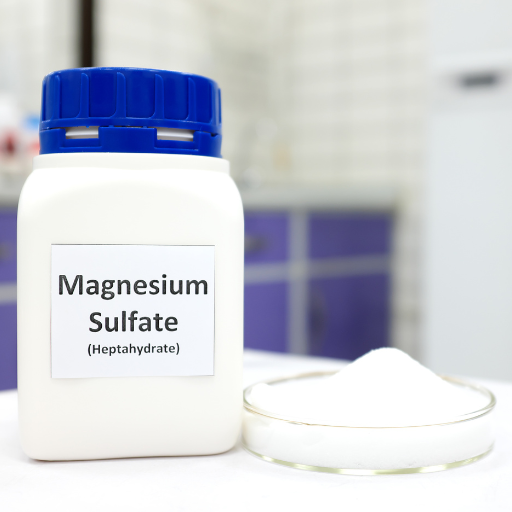
The dual composition of magnesium and sulfate in Epsom salt makes it an indispensable asset in gardening. Both are necessary macronutrients for ideal plant health. Chlorophyll is formed by magnesium, which therefore facilitates photosynthesis, the process that converts sun energy into a form of energy that the body can use. In addition, it enhances the uptake of other key nutrients such as nitrogen and phosphorus leading to better overall growth. Furthermore, Sulfate contains amino acids and proteins thus aiding in plant metabolism and development. The integration of Epsom salt into garden management practices not only increases growth rates but also improves plants’ tolerance to diverse stress factors, including environmental fluctuations and disease outbreaks. Understanding how this chemical compound operates can enable tillers to apply it to boost their crops more effectively.
Historical Uses in Agriculture
It has been applied historically since the 17th century, primarily in Europe, where its usefulness was first reported for improving soil fertility and crop yield. It gained popularity among farmers mainly because it could cure magnesium deficiency symptoms on crops such as interveinal chlorosis on leaves. The magnesium content of Epsom salt usually weighs approximately 9.8%, directly influencing chlorophyll synthesis vital for healthy plant development. Additionally, the sulfate component, which is about 13% by weight, plays a role in nutrient absorption, especially nitrogen sources, aside from enhancing flavors and quality of produce, a crucial aspect in commercial agriculture.
This supplement is often employed together with other fertilizers so as to maintain desirable physiological element ratio within plants when they absorb through their roots or leaves (Hodges et al., 2001). For instance, one can use this supplement to correct any mineral imbalance indicated by specific soil tests that have pointed out low levels of either Mg or SO4 . Recommended soil modifications typically suggest using 2-3 pounds per 100 square feet when broadcasting onto the soil or applying one to two tablespoons per gallon water for leaf sprayings. This dual-action approach addresses not only immediate nutrient requirements but also ensures long-term soil health, thereby making Epsom salt an essential ingredient for sustainable agriculture. Understanding such historical uses and their complementary technicalities emphasizes the significance of magnesium sulfate in promoting agricultural productivity.
Chemical Composition and Properties
Chemically known as magnesium sulfate (MgSO₄), Epsom salt is composed of one sulfur atom, one magnesium atom, and four oxygen atoms. Its structure makes it hydrophilic, allowing it to dissolve easily in water. At room temperature, Epsom salt dissolves readily in water with approximately 700 grams per litre solubility, facilitating the rapid availability of magnesium and sulphate ions for plants.
Since magnesium is centrally positioned in the chlorophyll molecule, it is responsible for photosynthesis and enzyme activation. Magnesium also stabilizes ribosomes enhancing protein synthesis within plant cells. The latter fraction comprises essential amino acids and proteins needed for plant metabolism.
In a heptahydrates crystal form (MgSO₄·7H₂O), Epsom salt contains water molecules critical for overall stability and bioavailability of this compound. Typically, a pH value around 6-7 may be assumed by a saturated solution of Epsom salts, indicating neutrality or a slightly acidic nature, which suits various types of crops and enables its compatibility with a wide range of soil conditions.
Epsom salt dosages vary in practical applications depending on the type of crops being grown and the soil. However, for foliar applications, it is advisable to use 1-2 tablespoons of Epsom salt per gallon of water because this helps in quick absorption. Besides, application of 2-3 pounds per 100 square feet is recommended as a soil amendment for effective recovery from magnesium or sulfate deficiencies, leading to improved plant performance.
The Role of Magnesium in Plant Health
Magnesium is a critical plant macronutrient whose presence in chlorophyll, the vital pigment for photosynthesis, cannot be overlooked. Besides, it acts as a cofactor in more than 300 enzymatic reactions involved in carbohydrate metabolism and DNA synthesis, amongst others, facilitating energy transfer and genetic replication within plant cells. Insufficiency of magnesium can result in such signs as interveinal chlorosis, where leaves show yellowing between veins, hence impairing growth and crop yield ultimately. Furthermore, plants with adequate magnesium levels exhibit improved resistance to environmental stresses and higher nutrient use efficiency thus necessitating optimal management of soil magnesium status during fertilization programs. Routine soil testing and plant tissue analysis should be conducted to supply sufficient amounts of Mg2+ that will satisfy different crops’ requirements.
Why Plants Need Magnesium
Several important functions in plants that result in better health are related to the need for magnesium by these organisms. In fact, it has been found that this element forms the central atom around which the chlorophyll molecule is constructed, thus making it an essential part of the photosynthesis process itself. This process enables plants to convert sunlight into energy and facilitates the synthesis of sugars and carbohydrates necessary for growth.
Moreover, as a cofactor in many enzymes that participate in energy transfer—primarily through its involvement in ATP—the currency of cells—and also DNA or RNA synthesis; among other roles can explain why magnesium is very vital for enzyme activation purposes. By doing so, it helps maintain structural integrity during periods when cells grow rapidly or are under stress.
Some technical indicators showing magnesium levels include not only soil concentration (which should be 50–100 mg/kg) but plant tissue concentrations (optimal levels often range from 0.2%—0.5 % on a dry weight basis for mature leaves). Regular assessments through soil tests and leaf analyses make it possible to fine-tune the doses of fertilizers and soil amendments so as to ensure that the plants are not magnesium-deficient during growth.
Magnesium Deficiency Symptoms
Plants may present various symptoms due to magnesium deficiency, impacting on overall growth and productivity. The most common visual indicators include interveinal chlorosis, where yellowing occurs between the leaf veins while the veins themselves remain green, typically starting from older leaves. This symptom arises because magnesium is a mobile nutrient; the plant reallocates magnesium from older tissues to support new growth. Leaf margins may have additional browning or necrosis depending on how bad the deficiency has become causing early leaf drop. Other symptoms can include stunted growth, particularly in fruiting crops, and poor fruit quality, as inadequate magnesium affects photosynthesis and energy production. Plants with a shortage of Mg also tend to be more susceptible to pests and diseases because their physiology weakens under such conditions.Regular monitoring coupled with timely intervention is important for stopping these effects that reduce crop yields and quality at every stage of development.
How Epsom Salt Solves Magnesium Deficiency
To treat the deficiency of magnesium, Epsom salt, also known as magnesium sulfate (MgSO₄) in chemical terms, supplies both sulfur and magnesium that are vital nutrients for plants. Magnesium is highly soluble when applied to the ground or used as a foliar spray through which plants take it in a faster way. This quick absorption helps reverse symptoms of deficiency, including interveinal chlorosis, by refilling plant tissues with available magnesium. Moreover, it contains sulphur that promotes amino acids and protein synthesis in crops, hence boosting their general development and tolerance power. In this case, applying them regularly, particularly during critical growth stages, will enable crops to sustain an optimal level of magnesium required for photo-synthesis, better fruits’ quality, and yields in general.
Specific Applications for Different Plants
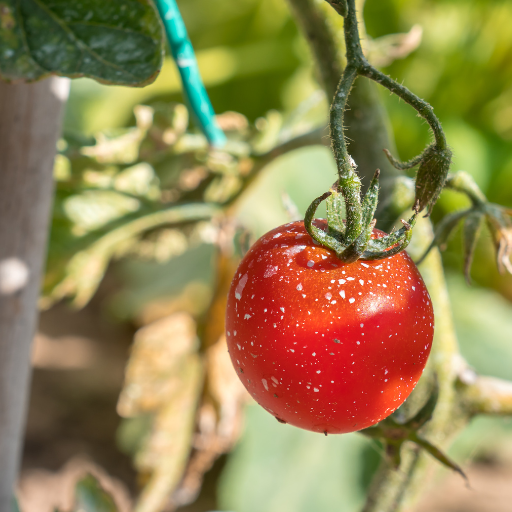
When dealing with specific applications of Epsom salt for different plants, it is extremely important to adapt use according to the nutritional requirements of each type. Common advice for tomatoes is to dissolve one tablespoon of Epsom salt in one gallon of water and apply it as a foliar spray every two to three weeks during flower initiation to enhance fruit set and growth. Likewise, at early stages of growth peppers may be given a similar solution that will encourage strong root formation and promote vibrant green foliage. To promote better blooming and stronger stems during the growing season roses should have Epsom salt applied at the rate of one tablespoon per foot high. Additionally, leafy greens such as spinach or lettuce need only a weak solution containing one teaspoonful per gallon to make them grow well. Consistency in plant response informs gardeners on how best they can utilize Epsom salts while effectively addressing any emerging deficiencies.
Using Epsom Salt for Tomatoes
Involving Epsom salt in tomato growing primarily serves two purposes which are nutrient absorption and healthy development. Mixing this into 1-gallon water then spraying it in form of fine mist every fortnight or four weeks during flowering and fruiting will serve the purpose. In addition to improving magnesium levels necessary for chlorophyll production and photosynthesis, this measure will also prevent blossom end rot – a common tomato problem associated with calcium imbalance. Moreover, soil incorporation of some amounts of Epsom salts during planting time further improves root growth as well as general plant fitness. Monitore plants using these applications so as to correct any nutrient deficiency if any thus enabling the best potentiality for the plants.
Benefits for Rose Cultivation
This is because higher contents increase color richness, signifying that more chlorophyll was manufactured, hence improving the performance of the roses themselves.Firstly, magnesium increases the synthesis process through chlorophyll production responsible for photosynthesis, thereby enhancing their redness intensity (red roses) and, hence, their robustness. Moreover, Epsom salt helps take up essential elements including nitrogen, phosphorous, and potassium which are crucial for flowering and root development. A regular application also makes the stems tough and enhances blooming to make a rose garden more prolific and visually appealing. Again, incidences of certain deficiencies, such as yellowing leaves, can be curbed by highly diluted Epsom salts so that the roses may remain lush and strong throughout the year’s growth period. Finally, through a proper nutrition regime, this art can significantly improve both the structural integrity and the appearance of roses.
Epsom Salt: A Gardener’s Friend In Growing His Green Vegetables
Several benefits come with the incorporation of Epsom salt in green leafy vegetable farming. Magnesium in Epsom salt is an important constituent for chlorophyll synthesis, hence improving the greenness and vigor of leafy crops like spinach, kale, and lettuce. It promotes more effective nutrient uptake, particularly nitrogen that leads to higher growth rates and increased yields. In addition, its use has been known to enhance plants tolerance against environmental stressors thus assuring quality produce. This results in more nutritious and attractive green leafy vegetables by regularly utilizing Epsom salt on the soil or as a foliar spray leading to a denser crop that is also visually appealing as well as healthy.
Application Methods and Best Practices
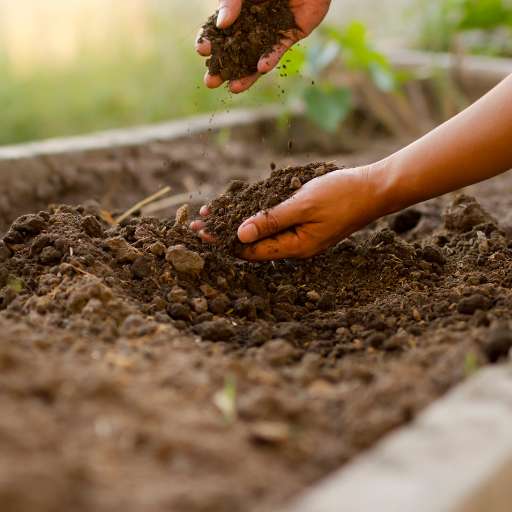
Applying Epsom salt for optimal plant health can be done in many ways by gardeners. Most commonly, it is dissolved in water to make a solution that is rich in nutrients. Generally, 1 tablespoon of Epsom salt to one gallon of water used for soil drenching and foliar spraying is the standard ratio. During early morning or late afternoon when evaporation is at its minimum and absorption at its maximum, this solution should be applied either on foliage directly or soil around the base of plants.
Besides, long-lasting benefits can still be derived from mixing Epsom salt into the soil during the planting phase. A recommended method involves putting one tablespoonful of Epsom salt into a planting hole before each plant so that as it grows magnesium will be available steadily to it. During rapid growth periods or flowering stages, nutrient balance, especially demand for magnesium, may be maintained by applying every four to six weeks during the growing season. Finally, over-application may result in nutrient imbalances and these could severely damage plant health if not monitored carefully when using Epsom salts on your plants. This, therefore, means that proper use of these tips ensures that Epsom salts are good fertilizers used in various crops, resulting in an increase in their normal size.
Soil Application Techniques
Different approaches have been suggested to maximize efficiency while applying Epsom salt to soil for plant health purposes. One major technique requires pre-planting mixtures with Epsom salts included. For each planting hole, it is advisable to incorporate one tablespoon full of Epsom salt, which supplies magnesium ions through sulfate ions, thus promoting uptake of nutrients within the root zone.
Another way is during the growing season, apply it to top dressing.For already established plants, sprinkle around their bases one teaspoonful, then dissolve by watering regularly within five weeks. The regular application interval between four and six weeks is highly recommended mainly because there are certain plants such as tomatoes and peppers that require the mineral magnesium especially during the time of fruiting and for overall healthy development.
Soil moisture content and pH levels should be monitored in order to achieve accurate application. Soil pH should ideally range between 6.0 and 6.5 because it is within this range that essential nutrients such as magnesium are highly available for plants. Furthermore, it is recommended that Epsom salts be applied at an active growing or flowering stage thereby maximizing plants’ ability to take up nutrients from them. The strategic approach ensures that Epsom salt contributes positively to soil health and plant productivity.
Foliar Spraying Guidelines
When soil application may not suffice, foliar spraying can also be a good method for supplying plants with magnesium and sulfate through Epsom salt. The optimum concentration of a foliar spray solution generally ranges from 1 to 2 tablespoons per gallon of water. Therefore, dilution must be done to prevent leaf burn while ensuring absorption.
The best time for foliar spray applications is early morning or late afternoon since less evaporation occurs due to low temperatures, enhancing nutrient uptake. This range promotes effective uptake via stomata (tiny openings on leaf surfaces); hence, the ideal humidity level during application should lie between 40% and 70%.
Additionally, how often the foliar application is made varies from one plant species to another and also depends on the growth stage; in magnesium-deficient crops, it can be advised that this process should be undertaken bi-weekly during critical stages of growth like flowering or fruiting. Prompt treatment is necessary when symptoms of deficiency become apparent, such as yellowing between leaf veins.
In conclusion, the directed use of foliar spraying combined with soil applications serves as an integrated approach to increasing magnesium availability in plants, leading to strong growth and better yields.
Doses and Timing
Therefore, for established plants in garden soils, Epsom salt dosage should be approximately 1 tablespoon per foot high while making sure that nutrient application takes into consideration specific crop needs. On the other hand, smaller or newly planted seedlings require about 1 teaspoon per gallon of water. Time has always been an important factor, especially at the beginning of the growing season, which means before flowering and fruiting if good results are desired. Magnesium levels in soil can be examined again after first applications thus ensuring that dosages can be modified for essential nutrients throughout all development stages. Regular soil tests could indicate whether additional applications will be needed later in the season by showing plant health trends. To achieve comprehensive results, it is important for these Epsom salt applications to be part of a holistic nutrient management plan that balances it with other fertilizers based on soil health assessments.
Potential Risks and Precautions
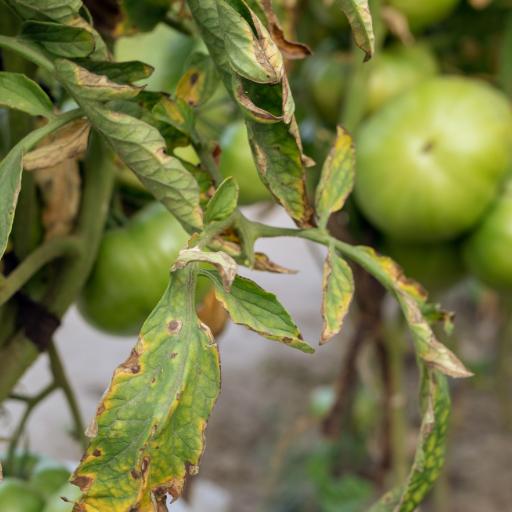
When utilizing Epsom salt for magnesium supplementation, one must take into account the possible risks and precautions to avoid adverse effects on plant health. Over-applying, it may cause a nutrient imbalance of potassium and calcium especially, which in turn will affect the normal growth and development of plants. Symptoms that occur due to excessive magnesium include leaf burn and general wilting. Moreover, it is important that applications of Epsom salts do not replace essential micronutrients provided by fertility maintenance of crops. It is, therefore, crucial to regularly monitor plant health, soil nutrient levels as well as responses to treatments so as to minimize these risks. It is also worth noting that the solution should be applied uniformly across the field with roots being protected from excessive concentration that can cause osmotic shock or root damage.
How To Avoid Overusing Epsom Salt
For example, avoiding overusing Epsom salts requires some sort of precision-based approach founded on informed decision-making. Start by conducting an in-depth soil test so you know what nutrients are available and what deficiencies exist in your soils profile. Then apply Epsom salt carefully according to this data only when you conclude that magnesium addition would be necessary and helpful. Typically there are recommended dosages ranging between 1-2 tablespoons per gallon of water; don’t go beyond them because too much magnesium might turn toxic for plants (Fiz et al., 2017). Finally, create a system where both plant health and soil nutrient levels are assessed throughout every growing season This will prevent any potential imbalances since Epsom salt does not contain all essential elements needed by plants but rather acts as a micro-nutrient supplement alongside fertilizer application programs. Another way forward can be through delivering multiple times lower amounts than single high doses within one season thus promoting better absorption by plants while minimizing chances for overdosing.
The Signs Of Magnesium Overloading In Plants
An excess supply in magnesium has distinct symptoms in plants as stated below. These are majorly shown as interveinal chlorosis, yellowing between leaf veins, particularly in old leaves, while the veins remain green. All these may lead to general plant weakening and, hence, reduced growth rates among crops. Similarly, there could be leaf curling or brown margins which also indicates that some nutrients have run out of balance. Stunted growth and increased vulnerability to diseases may be witnessed in certain cases. In addition, excessive magnesium levels can interfere with the uptake of other essential nutrients, such as calcium and potassium, thus making the symptoms even worse. The only way out is regular monitoring of nutrient levels in the field together with visual appraisal for diseased plants.
Combining Epsom Salt with Other Fertilizers
To use Epsom salt (magnesium sulfate) effectively along with other fertilizers, farmers should know their crop’s nutritional needs and understand what is contained in various fertilizers they apply. Information from top agriculture sources suggests that adding Epsom salt can promote the absorption of substances, especially in less-supplied Mg soils (Tucker et al., 2013). Below is a guide on major technical characteristics:
- Magnesium Content: Approximately 9.8% magnesium content is provided by Epsom salts, enhancing chlorophyll synthesis to increase photosynthesis as well. Symptoms like interveinal chlorosis observed on many plants are an indication that they lack adequate amounts of this nutrient element; therefore its application through Epsom salt can be very beneficial (He et al., 2015).
- Nutrient Ratios: The N-P-K ratio (Nitrogen-Phosphorus-K) of 3:1:2 is generally maintained when a balanced fertilization approach is used, except during different growth stages in plants. For instance, nitrogen should be higher during the vegetative stage, while during the flowering stage, a ratio close to 1:2:1 can be modified with Epsom salt to counterbalance magnesium deficiency without disturbing nutrient balance.
- Application Method: Split doses are recommended for applying Epsom salt, at one tablespoon per gallon of water every 4-6 weeks throughout the growing season. This minimizes leaching and ensures consistent availability of magnesium. Further, monitor soil pH levels when mixing Epsom salt with other fertilizers with an ideal range between 6.0 – 6.5 for optimal nutrient uptake purposes.
- Compatibility: Avoid mixing high-calcium amendments like lime when blending Epsom salt with other fertilizers since this may precipitate magnesium and lower its availability; rather, align it with balanced fertilizers containing trace elements and ensure their compatibility through soil testing.
Implementing these factors will result in more effective fertilization strategies that improve plant health and optimize nutrient use efficiency. Therefore, balancing fertility protocols calls for regular assessment and adjustment based on plant responses and environmental factors.
Addressing Common Questions and Misconceptions
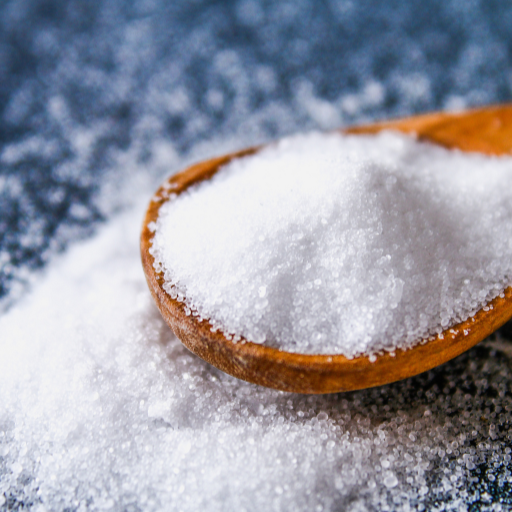
- The Myth of Epsom Salt as a Miracle Fertilizer: There is an incorrect belief that Epsom salt can substitute for full fertilizer; though it supplies magnesium and sulfur essential to photosynthesis and plant metabolism, no nitrogen or phosphorous—two crucial elements required in healthy plant growth—are contained in it.
- Usage and Dosage: Epsom salt is often overused by gardeners who think that more will lead to better growth. Nonetheless, the excessive application of this substance could cause soil nutrition imbalances since it contains sodium in large amounts. It is advisable that people apply it moderately with tests being carried out on their soils so as meet those needs.
- Impact on Soil Health: Some people assume that this fertilizer can drastically change soil pH levels. However, even though magnesium can impact soil chemistry, its inclusion alone does not bring about significant variations in pH levels. This necessitates regular examinations of soils to understand the prevailing soil conditions and how Epsom salt may fit into a comprehensive fertilization strategy.
Is Epsom Salt Safe for All Plants?
Epsom salt is generally regarded safe for most crops especially magnesium and sulfur benefiting ones like tomatoes, peppers and roses yet this depends on the efficacy, safety and environmental factors involved plus variation among species of plants grown alongside the type of soil present when applying them while certain plants may respond well to Epsom salts others such as those who do not require much magnesium may experience nutrient toxicity if doses are exceeded thus before using this supplement gardeners should test their soils first along with monitoring signs from their crops so as ensure nutritional requirements are met at recommended dosage level only leading to possibilities where despite being beneficial some individual needs may otherwise be ignored by these universal anthropogenic inputs.
Can Epsom Salt Replace Regular Fertilizers?
Apart from complementary uses in some situations, however, there are limitations of substituting regular fertilizers with Epsom salt. Regular fertilizers contain a mix of macronutrients such as nitrogen, phosphorous, and potassium, which are essential for plant growth. On the other hand, Epsom salt is rich in magnesium and sulfur and can address specific soil deficiencies, particularly in plants that require higher levels of magnesium. Although it improves nutrient uptake and encourages growth, relying only on Epsom salt does not provide a comprehensive nutrient profile for healthy plants. In this regard, an alternative approach would be to use both Epsom salts when there is a deficiency in particular minerals as well as balanced fertilizer for overall nutrition towards better-growing techniques. Besides these products, through routine soil testing, it becomes easier to determine correct rates, hence avoiding either over- or under-utilization, which might otherwise cause the death of various crops.
How Often Should Epsom Salt Be Applied?
Epsom salts should generally be used once a month during the growing season; however, the frequency varies depending on type of plants grown and condition of soils. For most garden vegetables and flowering plants, a solution made up of one or two tablespoons of Epsom salt dissolved in a gallon of water can be applied by spraying leaves or pouring them into the ground. Applying every two weeks on magnesium-deficient produce like tomatoes and peppers is also acceptable. It is essential to watch what happens after application; if growth gets better or shortages begin being remedied, proceed with the current schedule, but frequent applications beyond recommended dosages may lead to nutrient imbalances, so any improvements must be backed up by soil-based test outcomes as well as sightable signs coming from sickly plants following such treatments.
Reference sources
- MasterClass
- Source: MasterClass
- Summary: This source explains how Epsom salt, rich in magnesium, can enhance vegetable gardens by producing larger and more flavorful fruits and vegetables. It provides scientific insights into the mineral’s impact on plant growth.
- Epsom Salt Council
- Source: Epsom Salt Council
- Summary: The article details six ways to use Epsom salt in gardening, emphasizing its benefits such as improved seed germination, bushier plants, increased flower production, enhanced chlorophyll production, and pest deterrence.
- Gardening Know How
- Source: Gardening Know How
- Summary: This source discusses how Epsom salts may help certain plants by boosting essential nutrients, with a particular focus on the magnesium it provides. It offers practical advice on application methods for different plant types.
Frequently Asked Questions (FAQs)
Q: What is Epsom Salt and why is it used in horticulture?
A: Epsom Salt, chemically known as magnesium sulfate, is commonly used in horticulture to help plants grow by providing essential nutrients like magnesium and sulfur. These nutrients are vital for various plant functions, including photosynthesis and nutrient absorption.
Q: How does Epsom Salt benefit plants?
A: Epsom Salt can help your plants by improving nutrient uptake, boosting chlorophyll production, and enhancing overall plant health. It can lead to bushier plants, more blooms, and greener foliage, making Epsom Salt good for various types of plants.
Q: How do I apply Epsom Salt to my plants?
A: You can mix Epsom Salt in water and apply it as a foliar spray or add it directly to the soil. A common practice is to dissolve 1 tablespoon of Epsom Salt in a gallon of water and use this solution to water your plants.
Q: Is Epsom Salt good for tomato plants?
A: Yes, Epsom Salt can be beneficial for tomato plants. It helps prevent blossom end rot and promotes healthier, stronger growth. You can add a tablespoon of Epsom Salt to the soil around your tomato plant or use it as a foliar spray to provide essential nutrients.
Q: Can I use Epsom Salt on potted plants?
A: Yes, potted plants can also benefit from Epsom Salt. Mix 1 tablespoon of Epsom Salt per gallon of water and use it to water your potted plants. Doing so can help improve their nutrient absorption and overall growth.
Q: How much Epsom Salt should I use for my garden?
A: The amount of Epsom Salt used can vary depending on the plants in your garden. A general recommendation is to add a tablespoon of Epsom Salt per foot of plant height once a month. For larger areas, you can mix 1 cup of Epsom Salt in 5 gallons of water and apply it to the soil.
Q: Are there any plants that don’t like Epsom Salt?
A: While many plants benefit from Epsom Salt, it is always best to test a small area first. Some plants may be sensitive to the extra magnesium sulfate. Ensure that you observe your plants for any adverse reactions before significantly changing your fertilizing routine.
Q: Can too much Epsom Salt harm plants?
A: Yes, using too much Epsom Salt can harm plants. It is essential to follow recommended guidelines and avoid over-application. Excessive amounts can lead to nutrient imbalances and potentially damage plant roots.
Q: How often should I apply Epsom Salt for optimal growth?
A: For optimal growth, it is typically recommended to apply Epsom Salt once a month. This frequency ensures that plants receive a consistent supply of magnesium and sulfur without the risk of over-fertilization.






